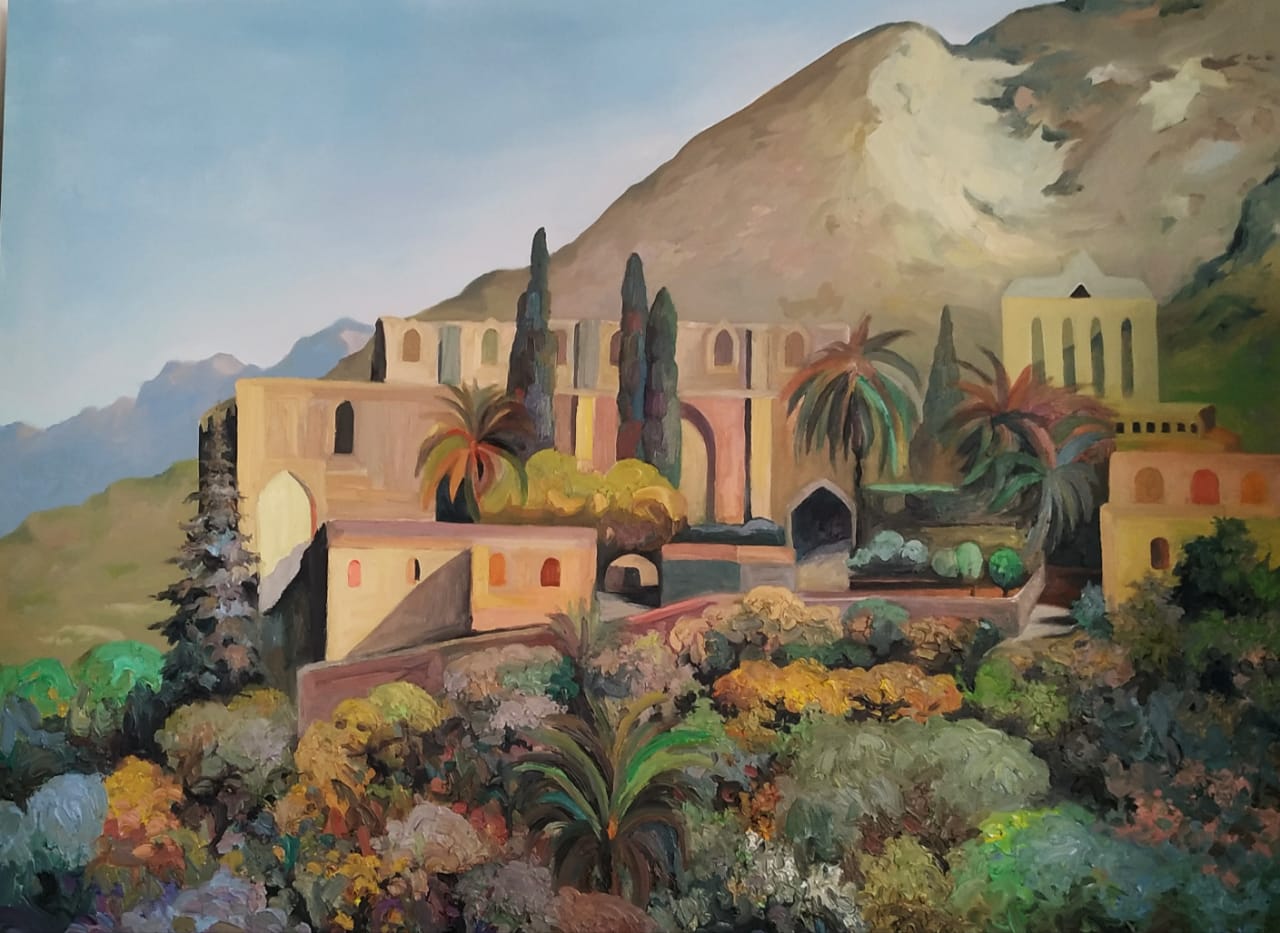
Artist Yerlan Nazarkulov delineated “Bella Pais Monastery (Abbaye de la Paix)”, “Kolossi Castle” and “The Conquest of Nicosia” for the Cyprus Museum of Modern Arts and the art pieces are currently being exhibited for art-lovers.
According to the press release issued by the Directorate of Press and Public Relations of Near East University, Yerlan Nazarkulov previously depicted other historical sites of Cyprus, St. Barnabas Church, Hala Sultan Mosque and Kyrenia Gate, to be contributed to the Cyprus Museum of Modern Arts, and currently he has created his art reflecting “Bella Pais Monastery”, originally named “Abbaye de la Paix”, located on the hills that embrace the Mediterranean in Kyrenia, one of the important historical and touristic places of Cyprus. Furthermore, he delineated the “Kolossi Castle” which is in Kolossi village, 14 km west of the city of Limassol; in addition to his artwork titled as “The Conquest of Nicosia” which describes the tough fight between Ottoman soldiers and Venetian soldiers during the time.
Bella Pais Monastery (Abbaye de la Paix)
It was built by the Lusignan administrators in the 12th century on the foundations built during the Roman period. The building is one of the best examples of gothic architecture in the Near East in all of the additions made in the Middle Ages. Founded on a rock at the foot of the Beşparmak mountains, the monastery's name is derived from the French "Abbaye de la Paix" (Peace Monastery). In his works, he depicted Bella Pais Monastery in two different ways.
Kolossi Castle
Kolossi Castle is an ancient Crusader castle on the south-western edge of the village of Kolossi, 14 kilometres west of the city of Limassol on the island of Cyprus. The castle was first built in 1210 by the Lusignan King Hugh I for the Knights Hospitaller. The castle that can be seen today was built in the middle of the 15th century by the Knights Hospitaller. Kolossi Castle was of great strategic importance in the Middle Ages and included great facilities for sugar production from sugar cane, one of Cyprus' main exports. Although the castle is associated with sugar, it is mainly famous for Commandaria wine.
The conquest of Nicosia
On September 9, 1570, the centre of Cyprus, Nicosia, was conquered by Lala Mustafa Pasha with his Ottoman army after a difficult siege. With the conquest of Nicosia, the Ottoman Empire established a Beylerbeylik organization on the island. In his work, Yerlan Nazarkulov depicts the tough struggle between Ottoman soldiers and Venetian soldiers in front of Nicosia Castle and the capture of the city by the Ottoman army.
Who is Yerlan Nazarkulov?
He was born in 1969 in Kazakhstan. He graduated from Almaty Oral Tansykbaev Decorative and Applied Arts College in 1991. He graduated from T. Zhurgenov Art Academy in Almaty in 1997. He is a member of the International Eurasian Designers Association. In 1993 and 1994, he participated in national art exhibitions in the city of Almaty. He held his solo art exhibitions at the Ular Gallery in 1996 and 1997. In 1999, he was awarded the State and Presidential Awards. In 2008, he participated in the national art exhibition "Nevruz" in Astana. He won the Presidential Award in 2010-2011. In 2012, he took part in the group art exhibition "Art Nazarkul". In 2013, he participated in the international group art exhibition held at the «Astana Artline» gallery. In 2014, he participated in the international art exhibition titled "Astana Art Fest". In 2016, he held his solo art exhibition at the Almaty State Central Museum. In 2017, he held a solo art exhibition at the Astana National Museum. Between 2016-2018, he participated in the international art exhibition "From Lisbon to Vladivostok" with the support of the Belarusian Ministry of Foreign Affairs and UNESCO. In 2018, he participated in the international art exhibition "Silk Road" held in Astana. His works are in private collections in countries such as the USA, Canada, France, Germany, Denmark, the Netherlands and Great Britain.



